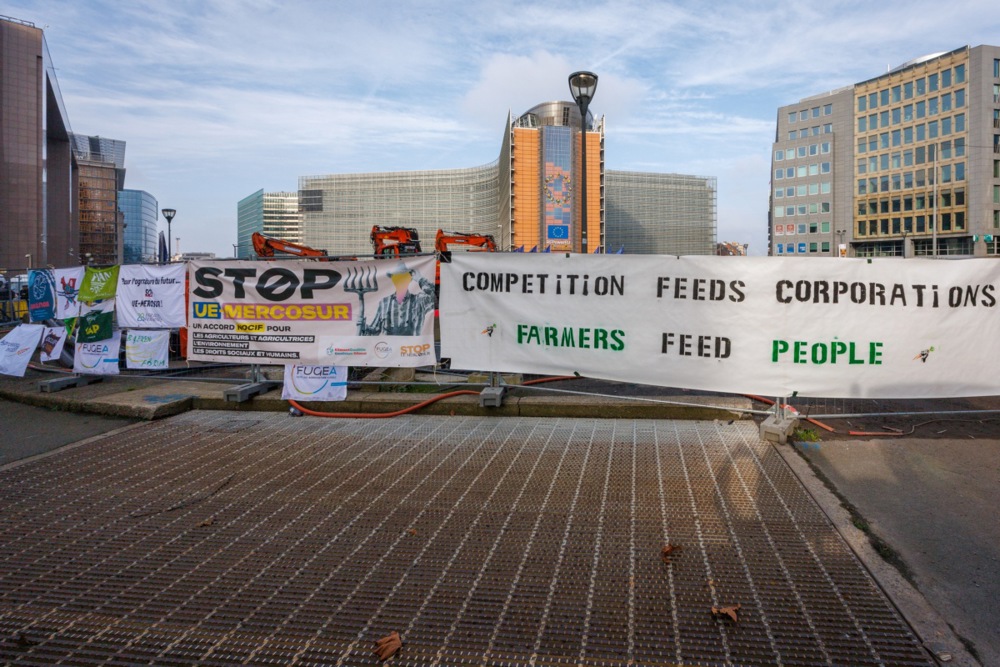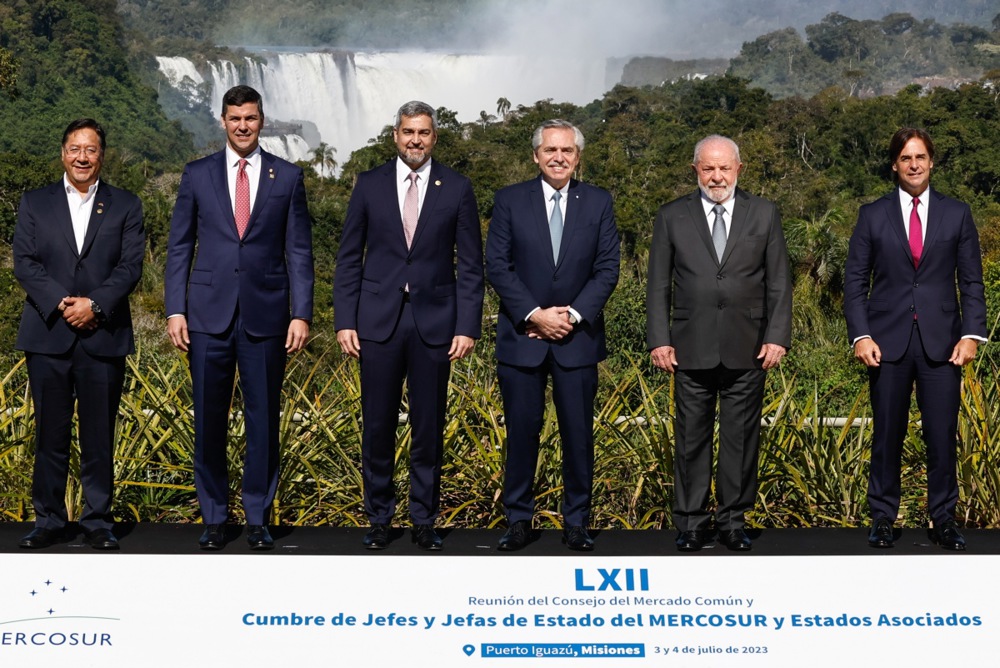The European Union wine industry has rallied behind the EU-Mercosur trade agreement, framing it as a necessary means to save the “declining market” in the bloc.
The EU and four Mercosur countries – Argentina, Brazil, Paraguay and Uruguay – reached a political agreement on December 6 2024 for the controversial partnership agreement.
The EU is Mercosur’s number one trade and investment partner. The bloc’s exports to Mercosur were €56 billion in goods in 2023 and €28 billion in services in 2022, according to the European Commission.
The European Committee of Wine Companies (CEEV) urged the EC to move forward with the ratification of the Mercosur trade deal, citing its potential for growth markets and securing long-term stability for European wine exporters.
“The global wine sector is facing a critical juncture, with consumption in steady decline across key markets,” said Marzia Varvaglione, President of the CEEV, on June 26.
“To ensure our long-term economic sustainability, we need to unlock new trade opportunities and attract new wine consumers, notably in Brazil,” she added.
The CEEV highlighted that Brazil, despite its population of more than 200 million, remained largely inaccessible to European wine producers due to its high import duties.
“We need this deal, and it is time for the Commission to adopt the legal text,” it said.
A 27 per cent tariff currently placed EU wines at a competitive disadvantage, one that would be eliminated under the new agreement, the CEEV added.
“Beyond eliminating tariffs, the agreement would establish a foundation for stable, long-term co-operation based on mutual recognition of geographical indications (GIs) and aligned oenological standards,” said Ignacio Sánchez Recarte, Secretary General of the CEEV.
The CEEV also rejected concerns that Mercosur wines could flood the European market, calling such fears “unfounded and unrealistic.”
Instead, it argued the agreement would be a two-way street, primarily benefiting EU exporters with premium positioning.
From Brussels, European Commissioner for Agriculture Christophe Hansen relayed industry sentiment.
Responding to MEP Christine Schneider in March 2025, Hansen pointed to recommendations from the EU’s High-Level Group on Wine Policy (HLG), which advocated for ambitious export strategies to mitigate internal market risks.
“Diversifying export destinations reduces market risk,” Hansen said.
Data from the International Organisation of Vine and Wine (OIV) showed in April 2025 that global wine consumption dropped by 3.3 per cent in 2024.
The EU remained the world’s largest market but posted a 2.8 per cent drop year-on-year in 2024 and a 5.2 per cent decline compared to the five-year average.
This trend underscored the urgency for EU producers to expand into emerging markets, industry leaders argued.
With traditional consumption habits shifting, particularly among younger demographics, opening new channels for growth was imperative, they said.





